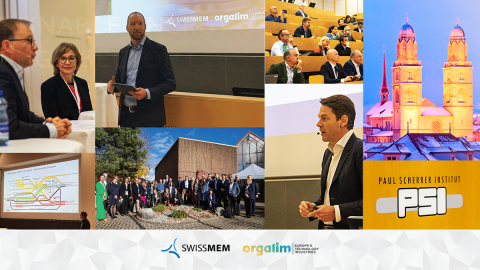Energy crisis: from challenge to opportunity to accelerate the energy transition
21 November 2022

As the focus at the COP27 and the G20 last week turned to energy, Europe’s technology industries met in Zurich to discuss their contribution to accelerating the energy transition in the face of today’s energy crisis. Together with the experts at the Paul Scherrer Institut (PSI) and ETH Zurich, we zoomed in on how to make sector coupling happen, linking different parts of the energy system with enabling technologies to massively increase the availability and efficiency of renewable energy.
From crisis to opportunity through collaboration
Opening the conference on Sustainable energy security through sector coupling, Swissmem CEO and incoming Orgalim Chair Stefan Brupbacher identified what turned out to be a recurring theme throughout the afternoon, namely the importance of collaboration: between technology industry sectors, between industry, academia and research centres like PSI and ETH Zurich, and between Switzerland and the rest of Europe, the main market of the heavily export-oriented Swiss technology industries. A theme taken up by Orgalim President Rada Rodriguez, Swissmem President Martin Hirzel and PSI Director Christian Rüegg, who all emphasised that, while the challenges of accelerating and completing the energy transition are considerable and complex, this crisis is also an opportunity to come up with new solutions and be smart about applying existing ones. Dr Rüegg said their simulations have shown it will take 150-300 billion CHF to complete the energy transition just in Switzerland between 2020 and 2050. A huge cost but also, as he pointed out, a huge market for European industry.
Our technology industries have a vital role to play in helping Europe demonstrate to the rest of the world that you can combine competitiveness with going climate neutral.
In closing, Orgalim’s Director General, Malte Lohan, summed up the relevance, urgency and importance of the discussion, not just for industry, but for Europe’s future prosperity. “Our technology industries have a vital role to play in helping Europe demonstrate to the rest of the world that you can combine competitiveness with going climate neutral,” he said. “It’s a responsibility we do not take lightly.”

LATEST NEWS
How can we create a dynamic, competitive European high-tech manufacturing base?
Orgalim's key recommendations offer policymake...
